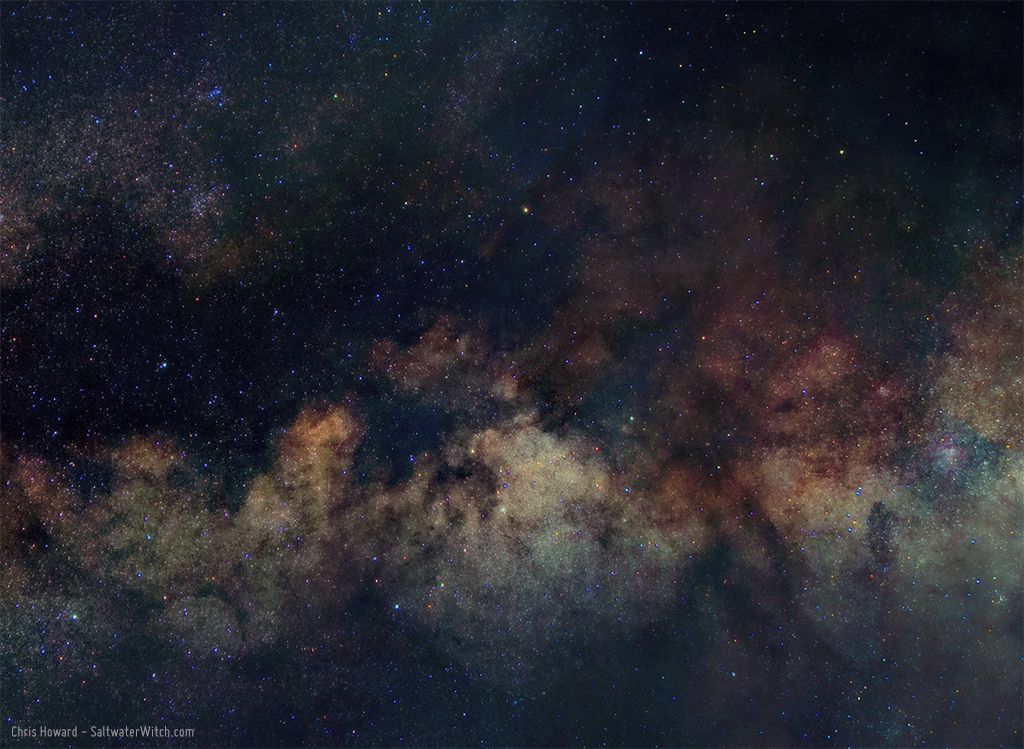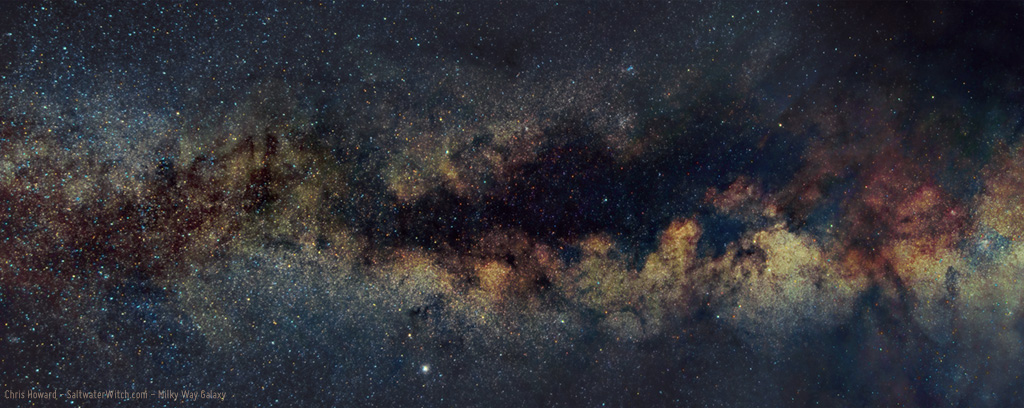Astro Session - February 11, 2018
February 11, 2018
It's been a cloudy week, and the seven days ahead don't look much better. So I'm digging through some wide-field frames from last summer--to stack and process, and I particularly love this small section of our galaxy, the Milky Way. We are about 26,000 lightyears from the center of our galaxy, all of us on our little blue planet orbiting a G-type main-sequence star. And if you're looking inward, toward the galactic center from our world, you'll see something like the image here (this is a crop of a much wider field of view, so you'll actually see much more, that well-known and aptly-named long pale band across the sky). We are right in the thick of things with our galaxy, which is well over a 100,000 lightyears across and contains as many as 400 billion stars. To put the size of our galaxy in perspective (and keep in mind that 100,000 lightyears is the low side of the approximate diameter, calculated to be between 100,000 and 180,000 lightyears across), we are talking about 587,863,000,000,000,000 miles. So, we'll round up a bit and say our galaxy is at least 588 quadrillion miles across. And to put the size our galaxy in perspective, one of our neighboring galaxies, M31, Andromeda, may be twice the size of the Milky Way, with as many as a trillion stars (It seems like there's always a debate on the size of M31). And if that doesn't make you think about our place in the universe, take a look at this Hubble image and understand that almost everything in the frame, every point and spiral and smear of light is itself an entire galaxy: https://www.nasa.gov/feature/goddard/hubble-spies-big-bang-frontiers. How's that for something to contemplate on a nice Sunday afternoon? You're welcome.

The above shot covers a 30 × 20° FOV of the Milky Way from a little below M17 (Swan Nebula) in the constellation Sagittarius to a little past Delta Aquilae, the bright white star at the bottom left, in the constellation Aquila. Below, is my original shot cropped from M17 on the right to just past Eta Cygni, a variable double star in the constellation Cygnus--about twice the width of the one above. The brightest star in the frame, low center, is Altair.

